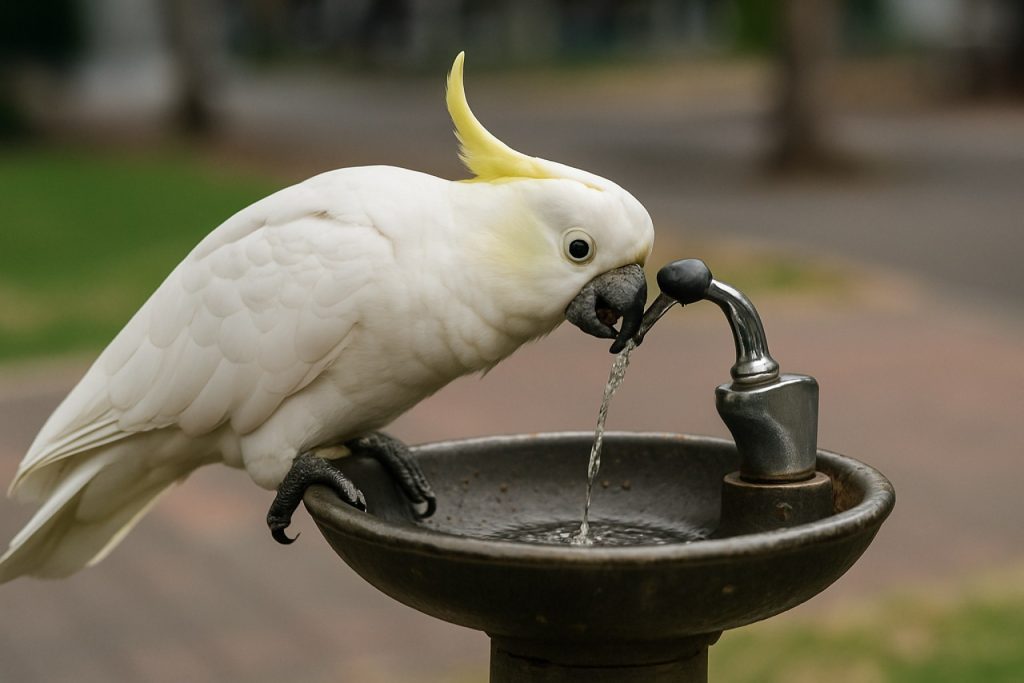
You Won’t Believe What Sydney’s Craftiest Cockatoos Are Doing to Beat the Heat in 2025
Sulfur-crested cockatoos in Sydney have learned to operate public drinking fountains, revealing new levels of bird intelligence and urban adaptation.
- 41% Success Rate: Cockatoos activate drinking fountains almost half the time observed.
- First-Ever: Wild parrots globally documented turning taps for water in urban parks.
- City Survivors: Behaviour observed across multiple Sydney reserves and sports fields.
If you thought Sydney’s savvy sulfur-crested cockatoos were done impressing the world with their bin-raiding escapades, think again. In a stunning urban twist, 2025 marks the year these brilliant birds stepped up their game—mastering public drinking fountains and outsmarting city challenges with ingenuity that rivals some primates.
Researchers from the Max Planck Institute, University of Vienna, Western Sydney University, and the Australian National University set out to uncover just how far cockatoos’ problem-solving would go. Armed with motion-triggered cameras, the international team recorded feathery engineers turning the handles on public fountains and drinking their fill—all on camera across several bustling parks in Western Sydney.
It’s not just a cute party trick. This behaviour marks a first worldwide, with wild parrots shown to independently adapt city technology for survival.
How Are Cockatoos Working the Water Fountains?
With jaw-dropping dexterity, cockatoos use coordinated footwork: typically, placing one foot (most often the right) on the twist-handle or valve, and gripping the rubber spout with the other. By shifting their weight and twisting just right, they get the water flowing, then quickly turn their heads to sip the stream. The researchers even reported orderly lines of cockatoos perched nearby, waiting their turn during the busy dawn and dusk hours.
Q: Do All Cockatoos Do This, or Just a Few Geniuses?
Surprisingly, the clever drinking hack has spread widely across the local flocks, showing clear evidence of social learning. Unlike rubbish-bin raids (which favour males), this fountain feat is equally shared between males and females.
Why Is This Important for Urban Wildlife?
The findings, published in Biology Letters, show that cockatoos aren’t just surviving in the city—they’re thriving by quickly adapting and teaching each other new skills. This could point to a future where urban wildlife more broadly follows suit, inventing odd but inventive routines to cope with shrinking habitats and evolving cityscapes.
For more on bird intelligence and animal adaptation, explore resources at BirdLife International, Audubon, and for the latest in science research, check out Nature.
How Can You Spot This Behaviour in the Wild?
To catch a cockatoo in action:
- Visit parks or sports fields in Western Sydney early morning or late afternoon.
- Look for groups of cockatoos near public drinking fountains—patiently lining up.
- Watch for the telltale two-footed maneuver and quick twist of the drinking valve.
- Bring your camera, but keep a respectful distance to avoid disrupting their new tradition.
What Does This Mean for Urban Planning in 2025?
City planners may now consider wildlife-friendly fountain designs as a way to support hydration for birds during hotter years. Urban adaptation is becoming the new normal, and research like this reminds us that intelligent wildlife can help shape the cities of the future.
Take Action: Help Urban Wildlife Thrive!
- Always clean up litter and seal bins securely to discourage hazardous foraging.
- Learn about local wildlife and share your sightings with conservationists.
- Support the installation of more accessible, animal-friendly water sources in parks.
- Stay informed: Follow organizations like WWF for the latest in urban wildlife news.
The next time you pass a drinking fountain, take a closer look—you might run into Sydney’s new urban innovators at work!



